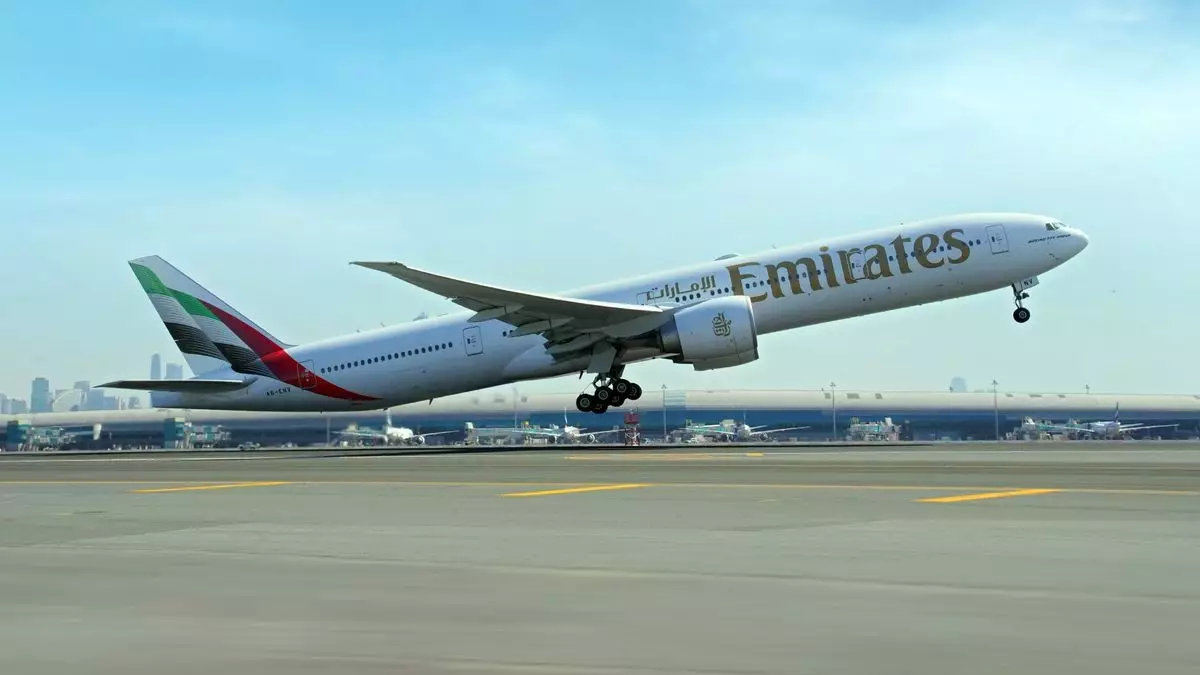In light of recent geopolitical developments, air travel in the Middle East is undergoing a transformation that has left many airline operators and travelers grappling with lengthy travel times. This change has been exacerbated by airlines’ reluctance to traverse Iranian airspace, even after a ceasefire between Iran and Israel was established. Travelers venturing to and from the Gulf states are now facing a paradox: while the skies may be technically open, the altitude of bureaucratic and safety concerns keeps many airlines on a cautious path. This cautious avoidance seems to be the new norm, creating an extended travel experience for many.
Flight-tracking technologies, such as Flightradar24, unveil the operational maneuvers adopted by airlines as they opt for alternative routes. Most airlines—bar a few exceptions—have resorted to traveling either north over Turkey or south over Egypt and the Arabian Peninsula. This strategic avoidance of Iranian airspace is especially burdensome for carriers like Emirates and Qatar Airways, which have traditionally relied on more direct routes.
Impact on Key Airlines
Carriers closely tied to the Gulf region are undoubtedly feeling the pressure. For instance, Air India has faced operational challenges after briefly halting Europe and North America services due to rising tensions. Their decision to change flight paths to avoid flying over Iran—part of the FAA’s longstanding directive—complicates matters further, especially with Pakistan’s airspace restrictions on Indian carriers. This layer of complexity not only increases flight durations but also causes a domino effect on the scheduling of flights, resulting in more congested skies.
The buffers created through these alternate routes add approximately 45 to 90 minutes of flight time, depending on weather variables such as jet streams. This seems trivial on paper, but in the fast-paced world of international travel, every minute counts. Such adjustments wreak havoc on pre-existing schedules and inevitably lead to a less efficient travel system, raising costs and traveler dissatisfaction.
Air Traffic Control: Managing the Congestion
Despite the chaos created by these new flight patterns, air traffic control bodies have been remarkably agile in managing the situation. As Ian Petchenik from Flightradar24 highlighted, the alternative routes being adopted have led to increased traffic across both northern and southern pathways. This surge could theoretically snowball into major delays and congestion. However, reports suggest that air traffic control entities have been proactive in dealing with the complexities presented by the new routes.
John Grant, a senior analyst for the airline data tracker OAG, noted that airlines have been cautious in scheduling their flights. By incorporating adequate turn-around times in their scheduling, airlines have introduced a buffer that allows for minimal disruptions, ensuring that schedules remain aligned to an extent. This proactive approach might well be the saving grace for many travelers in the upcoming months.
The Future of Travel Demand in the Region
As the dust begins to settle, the essential question that looms over this shifting landscape is how these developments will impact travel demand in the Middle East. Airports such as that in Tel Aviv have resumed normal operations, yet U.S. airline flights remain suspended, casting doubt on future demand. Jens Flottau, an aviation expert, believes a temporary dip in demand is likely until stability is established once again.
Innovative solutions and adaptive strategies will be vital in navigating current challenges. As the state of the region stabilizes, it’s hoped that the Middle Eastern hubs will regain their reputation as desirable connecting points for global travelers. The complexity of international air travel today compels stakeholders to remain vigilant and adaptable—and those that succeed may well emerge stronger in a fundamentally changed arena of world aviation.


Leave a Reply